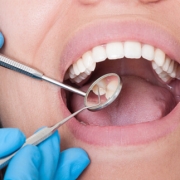Risk Factors in the Development of Eosinophilic Esophagitis (EoE)
 In a review article published in the Journal of Allergy and Clinical Immunology, Elizabeth T. Jensen, MPH, PhD, and Evan S. Dellon, MD, MPH, both from the Center for Esophageal Diseases and Swallowing, Division of Gastroenterology and Hepatology, at the University of North Carolina School of Medicine, Chapel Hill, North Carolina, provided an overview of emerging data on environmental risk factors for eosinophilic esophagitis (EoE).
In a review article published in the Journal of Allergy and Clinical Immunology, Elizabeth T. Jensen, MPH, PhD, and Evan S. Dellon, MD, MPH, both from the Center for Esophageal Diseases and Swallowing, Division of Gastroenterology and Hepatology, at the University of North Carolina School of Medicine, Chapel Hill, North Carolina, provided an overview of emerging data on environmental risk factors for eosinophilic esophagitis (EoE).
- Laurel Ranger, PulmonaryAdvisor.com 1
(In eosinophilic esophagitis (e-o-sin-o-FILL-ik uh-sof-uh-JIE-tis), a type of white blood cell (eosinophil) builds up in the lining of the tube that connects your mouth to your stomach (esophagus). This buildup, which is a reaction to foods, allergens or acid reflux, can inflame or injure the esophageal tissue. Damaged esophageal tissue can lead to difficulty swallowing or cause food to get stuck when you swallow. 2)
- Both the incidence and prevalence of EoE have increased dramatically during the last 20 years.
In 1990, the incidence of the disease was estimated at 0.4 cases per 100,000 per year, whereas current estimates are approximately 10 cases per 100,000 per year, with a prevalence of 50 to 100 cases per 100,000. Nearly a half million Americans are affected and the annual healthcare costs are approximately $1.4 billion.
- Although genetic susceptibility markers have been identified, the rapid increase in recent years suggests that environmental factors may play the larger role. Furthermore, twin and family studies have indicated that shared environmental factors early in life may also be critical.
The hygiene hypothesis poses that an overly hygienic environment potentially contributes to the absence of essential commensal bacteria. However, studies of the human microbiome are lacking and further research is necessary to determine whether there is any validity to this theory about EoE pathogenesis.
Early life factors have been implicated as well, and some suggest that EoE is part of the atopic continuum because it often coexists with other atopic illnesses.
Antibiotic use, Cesarean delivery, preterm delivery, neonatal intensive care unit admission, choice of infant feeding, and other factors that alter the microbiome early in life may influence disease development. Of these factors, antibiotic use in infancy has the strongest evidence of an association with EoE. The use of acid suppressants during pregnancy has been associated with atopic disease in offspring; however, this association has yet to be investigated thoroughly.
Infectious disease may be involved in EoE as well. Helicobacter pylori has shown an inverse correlation with atopic disease and may be a protective factor, whereas herpes simplex virus may have a causative role. Both of these as well as other pathogens have not been evaluated adequately, however.
Geographic factors, such as population density, climate zone, and seasonality remain to be explored. In addition, only one study has evaluated behavioral risk factors such as smoking and alcohol intake, which have been associated with gastroesophageal reflux disease, and nonsteroidal anti-inflammatory drug use, which has been associated with atopic illnesses and other inflammatory gastrointestinal illnesses.
Studies of gene-environmental interaction may prove enlightening. One small study found that breastfeeding provided a protective effect for EoE in individuals with the susceptibility gene variant at rs6736278 (CAPN14). Epigenetic modifications are associated with the development of childhood asthma and allergy but these have yet to be explored in EoE.
Researchers have also observed an increase in the co-occurrence of EoE with autoimmune diseases such as celiac disease, Crohn ulcerative colitis, rheumatoid arthritis, immunoglobulin A deficiency, multiple sclerosis, common variable immunodeficiency, and autoimmune thyroid disease.
The authors noted that there is a paucity of research in EoE. Although evidence supports possible associations between antibiotic use in infancy and development of EoE, the studies have been retrospective and confounding factors such as the presence of asthma may be involved. Thus it is unclear whether antibiotic use is causative or involved in a common mechanistic pathway with EoE. Some risk factors may be modifiable, with evidence suggesting that behavioral factors may be altered to mitigate risk even in adulthood.
The authors concluded that more robustly designed studies are needed to identify the exposures involved in the development of EoE.
Reference
Jensen ET, Dellon ES. Environmental factors and eosinophilic esophagitis [published online May 2, 2018]. J Allergy Clin Immunol. doi:10.1016/j.jaci.2018.04.015
- 1 https://www.pulmonologyadvisor.com/allergies/eosinophilic-esophagitis-may-be-influenced-by-environmental-risk-factors/article/766105/
- 2 https://www.mayoclinic.org/diseases-conditions/eosinophilic-esophagitis/symptoms-causes/syc-20372197













